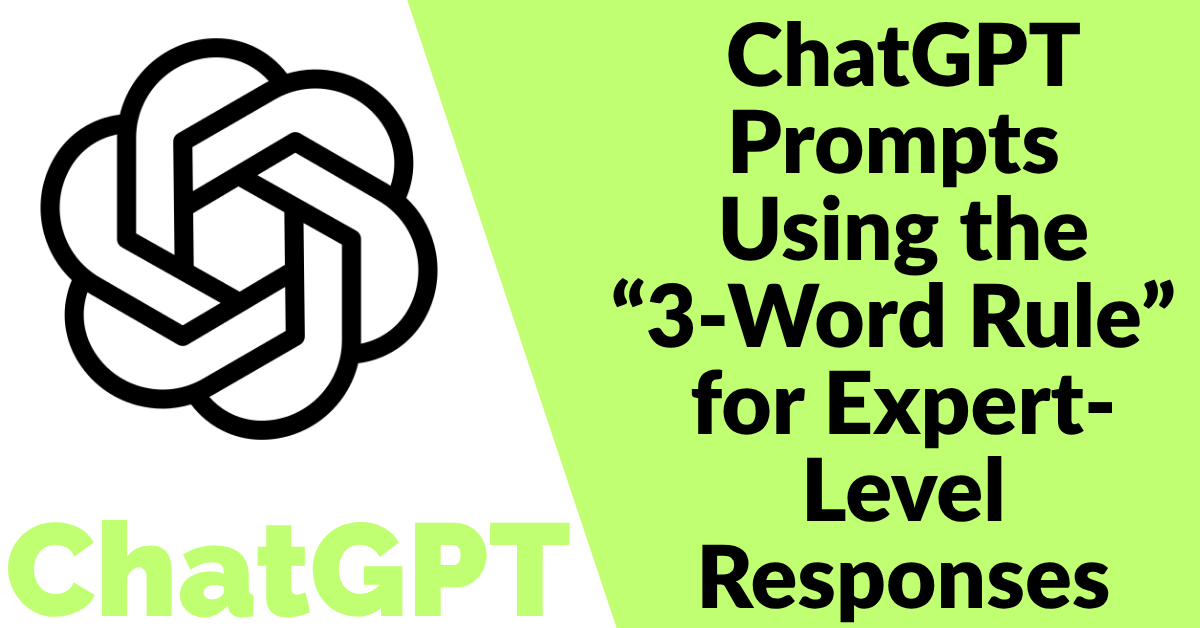
ChatGPT Prompts Using the “3‑Word Rule” for Expert-Level Responses
-
by AiPrompt
- 98
Ever typed out a detailed ChatGPT prompt and still felt underwhelmed by the response? You’re not alone. The trick isn’t just asking more — it’s asking *smarter*. That’s where the “3‑Word Rule” comes in: a subtle prompt design tactic that turns average inputs into expert-level outputs.
What’s the 3‑Word Rule? It’s a creative structure where you start your prompt with three precise, action-driven words. These words instantly tell the model how to behave and what outcome you’re expecting — much like guiding a co-pilot. Think: Summarize, Compare, Advise or Breakdown, Reframe, Recommend.
This method doesn’t just improve clarity; it also reduces hallucinations, improves logic flow, and makes the answer more useful. I’ve personally used this in real projects—from marketing copy to pitch decks to learning strategies—and I can tell you it works like magic ✨. Let’s dive into 9 powerful 3‑Word Rule prompts that give expert-like, structured results with very little tweaking.
🧠 ChatGPT Prompts Using the “3‑Word Rule” for Expert-Level Responses
❓ FAQs
Q1: Why does the 3‑Word Rule work?
A: It gives GPT clear intent, structure, and action steps — making your prompt more logical and focused.
Q2: Is it only useful for writing?
A: No! It’s great for strategy, design briefs, product thinking, branding, analysis, and even brainstorming.
Q3: Can I create my own 3 words?
A: Definitely. Just make sure they are verbs and match your goal (e.g., “Visualize, design, narrate”).
Q4: Do I always need to use three?
A: Three is optimal — enough for clarity, not too much for confusion. But two or four can also work.
Q5: What makes this “expert-level”?
A: The outputs become cleaner, clearer, and more logical — just like how a consultant or strategist would respond.
🔥 Final Thought:
Next time you’re about to hit enter on a prompt, pause and try adding three action-packed words upfront. It might just be the smartest tweak you make all day. Clear inputs, pro outputs — that’s the 3‑Word Rule magic.
Related posts:
Ever typed out a detailed ChatGPT prompt and still felt underwhelmed by the response? You’re not alone. The trick isn’t just asking more — it’s asking *smarter*. That’s where the “3‑Word Rule” comes in: a subtle prompt design tactic that turns average inputs into expert-level outputs. What’s the 3‑Word Rule? It’s a creative structure where…
Ever typed out a detailed ChatGPT prompt and still felt underwhelmed by the response? You’re not alone. The trick isn’t just asking more — it’s asking *smarter*. That’s where the “3‑Word Rule” comes in: a subtle prompt design tactic that turns average inputs into expert-level outputs. What’s the 3‑Word Rule? It’s a creative structure where…
